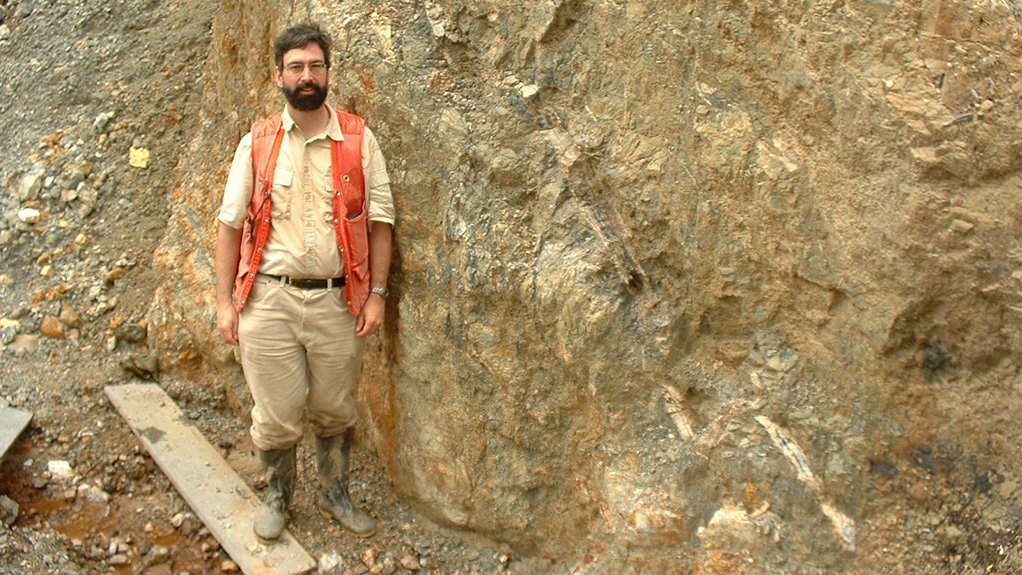How Spanish immersion placed resource hunter Aurania on trail of Ecuador’s ‘lost cities’


Dr Keith Barron president and CEO Aurania Resources in Ecuador
Photo by Aurania Resources
VANCOUVER (miningweekly.com) – Junior explorer Aurania Resources is hot in pursuit of finding the last two of seven ‘lost cities’ in Ecuador abandoned by the Spanish conquistadors centuries ago.
With the Toronto-headquartered company on the cusp of closing a C$6-million financing led by Maison Placements Canada and Red Cloud Klondike Strike, Aurania’s president and CEO Dr Keith Barron is gearing up to head back to Ecuador in search of the lost gold mines that supported the Spanish settlements, and possibly local tribes, long before the Spanish explorers arrived.
Barron, who is also the founder of Aurelian Resources, is credited with being the geologist who discovered the Fruta del Norte deposit – one of Ecuador’s biggest gold discoveries that later sold for $1.2-billion and is currently under development by Lundin Gold – and is quick to point out to Mining Weekly Online during an interview that he is not on a Hollywood-style treasure hunt, based on some wild-eyed prospector holding a fragment of an old map, or who overheard a conversation in a bar.
As history states, there were seven prominent gold mining cities in Ecuador in the days of the conquistadors, and while five have been rediscovered, two, Logroño de los Caballeros and Sevilla del Oro are still ‘lost’. Today, there are hundreds of historic and contemporary documents that prove that Logroño de los Caballeros and Sevilla del Oro existed, that they produced gold and that they are now lost somewhere in the Cordillera de Cutucu, Barron stated.
SPANISH IMMERSION
According to Barron, the Lost City project started through curious circumstances in 1998, when he was on a field leave from a job in Venezuela and enrolled in a Spanish language school in Quito and lodged with professor Octavio Latorre and family.
Latorre is a historian, archivist and world authority on the earliest maps of the Amazon region. Latorre told Barron that there had been seven famous gold mines in the ‘Audiencia de Quito’ (present day Ecuador) in the days of the conquistadors, and that five had been relocated and two were still lost.
The last to be relocated – Nambija – was found as recently as 1981 by a hunting party who stumbled on some open tunnels in the jungle. It had been abandoned in 1603 after an epidemic killed most of the native workers, Barron explained.
The discovery triggered a rush into the area by artisanal miners, and within months there were 25 000 of them on the site of the Nambija mine, in 75 different operations. Though it produced 2.7-million ounces of gold on the record between 1981 to 2000, an unknown amount of gold was sold into the black market.
Few taxes were ever paid into the coffers of the Ecuador government and the miners have left a legacy of unstable underground workings, open sewers, unreclaimed spoil heaps and open holes, not to mention the total denuding of the area of trees and the extinction of all wildlife. Nambija is the world’s most polluted site for mercury. In 2000, about 300 people were killed when unstable hills of mine waste buried half of the shanty town.
“After Nambija was rediscovered, historians brought to the government’s attention that this had been a Spanish mine, and maybe before that an Incan mine. It was known from numerous archival documents and contemporary maps. Professor Latorre was contracted as one of a small group of historians tasked to pore through the records and look for old mines,” Barron stated.
Government believed that if others could be located and secured, then they could be mined in a logical, planned and technologically advanced manner, safeguarding the interests of indigenous peoples, and the fauna and flora, and with ultimate benefit to the State and people of Ecuador. “Sadly, when the government changed, the work was no longer supported and the results were hastily thrown into a small paperback ‘Investigación Histórica de la Minería en el Ecuador’, published in 1990, which is rather impenetrable except to the neophyte,” Barron explained.
MODERN EXPLORATION
According to Barron, Aurania intends to follow through with the original intentions of the Ecuador government in the 1980s.
“Our research shows overwhelmingly that the historical mines of Logroño de los Caballeros and Sevilla del Oro most certainly existed, and that they lie somewhere in the Cordillera de Cutucu, and most probably in areas remote from infrastructure,” he said.
Earlier this month, Aurania announced it has entered into a definitive purchase and sale agreement to acquire Ecuasolidus, which has strategically acquired the most likely areas for finding mineralisation, based on knowledge of the geology and with the historical narrative as a guide.
Barron said a moratorium on new concessions had been in place for seven years before being lifted in March 2016. During the moratorium, he was anxious that artisanal miners would stumble into the area and produce another Nambija fiasco, which would be extremely destructive to the environment and prejudicial to native peoples and other stakeholders.
Fortunately, that did not happen. Instead, Aurania intends to follow the stringent guidelines of the Ecuadorian Ministry of Mines (Ministerio de Minas) and the Ministry of the Environment (Ministerio de Ambiente) in their exploration work and consultation with the local communities, and use company best practices in conducting its field activities.
The concessions owned by Aurania are duly legally filed and protected by law from invasion.
Aurania intends to fully explore the concession areas and report back to government on releasing any areas without potential, so that they can be later incorporated into wildlife sanctuaries or other protected areas at the government's discretion. A 60% interest in the government royalty, payable to the local community, is enshrined in the Ecuador Constitution, meaning that local communities stand to benefit greatly with exploration jobs and payments from the federal government if exploitation eventually becomes a reality, Barron stated.
Aurania’s financing closes on April 7, co-led by Red Cloud Klondike Strike, and will raise $6-million at a share price of $2. Red Cloud Klondike Strike is changing the way mining companies raise capital and leading the “democratisation of mining investment”, president and CEO Chad Williams said. Red Cloud Klondike Strike details placement information online, in a simplified process that welcomes the broader retail investor community to take part in the selection of deals.
“When you put good geology together with this historical narrative, it gets very telling. This project is well suited to retail investors, what with the plethora of treasure hunting television programmes airing these days. This is a real opportunity for retail investors to get involved in finding meaningful mineralisation,” Barron said.
Barron and his team will use the financing to fund the exploration project using the same measured, logical and methodical exploration techniques used in the discovery of Fruta del Norte.
Comments
Press Office
Announcements
What's On
Subscribe to improve your user experience...
Option 1 (equivalent of R125 a month):
Receive a weekly copy of Creamer Media's Engineering News & Mining Weekly magazine
(print copy for those in South Africa and e-magazine for those outside of South Africa)
Receive daily email newsletters
Access to full search results
Access archive of magazine back copies
Access to Projects in Progress
Access to ONE Research Report of your choice in PDF format
Option 2 (equivalent of R375 a month):
All benefits from Option 1
PLUS
Access to Creamer Media's Research Channel Africa for ALL Research Reports, in PDF format, on various industrial and mining sectors
including Electricity; Water; Energy Transition; Hydrogen; Roads, Rail and Ports; Coal; Gold; Platinum; Battery Metals; etc.
Already a subscriber?
Forgotten your password?
Receive weekly copy of Creamer Media's Engineering News & Mining Weekly magazine (print copy for those in South Africa and e-magazine for those outside of South Africa)
➕
Recieve daily email newsletters
➕
Access to full search results
➕
Access archive of magazine back copies
➕
Access to Projects in Progress
➕
Access to ONE Research Report of your choice in PDF format
RESEARCH CHANNEL AFRICA
R4500 (equivalent of R375 a month)
SUBSCRIBEAll benefits from Option 1
➕
Access to Creamer Media's Research Channel Africa for ALL Research Reports on various industrial and mining sectors, in PDF format, including on:
Electricity
➕
Water
➕
Energy Transition
➕
Hydrogen
➕
Roads, Rail and Ports
➕
Coal
➕
Gold
➕
Platinum
➕
Battery Metals
➕
etc.
Receive all benefits from Option 1 or Option 2 delivered to numerous people at your company
➕
Multiple User names and Passwords for simultaneous log-ins
➕
Intranet integration access to all in your organisation



















